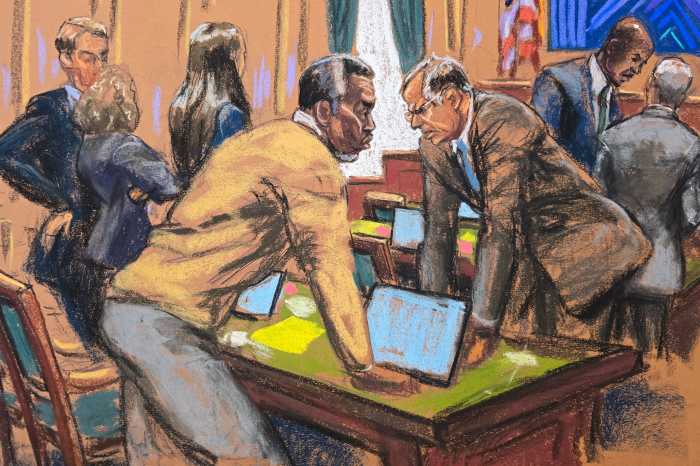Imagine watching LeBron James play basketball on the original peach baskets used by the game’s creator, James Naismith. Or guitar virtuoso St. Vincent playing the guitar that Bob Dylan “plugged in” at the Newport Folk Festival in 1965. Seeing the best of today use the tools of the originals can be both a history lesson and a good time.
It’s in that spirit that DJ Shadow and Cut Chemist jumped at the chance to put together a DJ set using only the records contained in Afrika Bambaataa’s 40,000-strong record collection. An originator of hip-hop, Bambaataa is one of the first DJs and, therefore, one of the key figures in the genre’s history. Now, Shadow and Chemist are taking that history on the road and putting their own spin on it.
amNewYork caught up with DJ Shadow in advance of his stop at Irving Plaza.
How do you even begin curating Bambaataa’s collection into a meaningful set?
There’s a copy of Funkadelic’s first album and we’re using one of the last songs on one of the sides, and the top half of the record is worn out. There’s just a giant chunk of the actual record missing. It became clear to us going through his collection that if it was a clean, pristine record there was a good chance he didn’t play it. It became very clear which records matter to him.
Why is this different from simply using an MP3 version of his music collection?
I’ve been collecting records for most of my life, but at some point while I was going through the [Bambaataa] collection it dawned on me that this wasn’t just any copy of Incredible Bongo Band’s ‘Apache,’ it was the copy. The one that was being played in the parks in the ’70s and upon which so much of the culture is based. For anybody else, any copy has a particular meaning, but when you know it’s Bambaataa’s copy, it’s talismanic. It’s where it all began.
You and Cut Chemist work together regularly. What is it about the two of you that makes for a smooth collaborative process?
If I had to say one thing, it’d be the passion for the culture. We were removed — not only geographically, but also age-wise. When hip-hop became a national movement, in ’82 or ’83, I was about 10 years old. That’s a very formative age when I’m trying to figure out my own identity and what I believe in. I’m in this classic rock world in Sacramento Valley [in California] and that’s not speaking to me. Hip-hop spoke to me. I think it was the same to Luke [MacFadden, aka Cut Chemist], in L.A. It was this portal to the future and seemed so much more relevant than anything else in music.




































